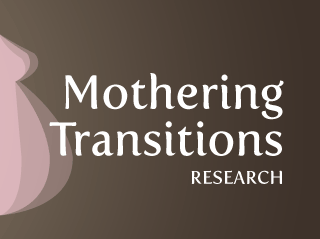Social Locations, Social Connectedness, and Postpartum Depression
Background: Although postpartum depression (PPD) is a significant health issue for women and their families, research to date has focused almost exclusively on Caucasian, married women of mid- to high socioeconomic status. As a result, available research has not adequately examined the impact of varying social locations, including partner status, sexual orientation, and geographic location, on postpartum mental health. Further, although social support has been strongly associated with risk for PPD in many studies, no research has addressed a potential role for other indicators of social connectedness, including social integration, social isolation, and social exclusion, in PPD. In order to address this research gap, the proposed study seeks to examine the prevalence of PPD among three populations of women who are expected to experience high levels of social integration (rural mothers), social isolation (single mothers, rural mothers), and social exclusion (lesbian and bisexual mothers, single mothers).
Research Questions: (1) What is the prevalence of depression at 6-8 weeks postpartum among rural mothers, single mothers and lesbian and bisexual mothers, relative to control mothers? (2) Are social integration, social isolation, and social exclusion significantly associated with risk for PPD among rural mothers, single mothers, and lesbian and bisexual mothers?
Study population: Target populations include: a) rural mothers (N=200), b) single mothers (N=200), and c) lesbian/bisexual mothers (N=200). Control populations include: a) partnered, heterosexual mothers living in a major urban centre (Toronto) (N=200), and b) partnered, heterosexual mothers living in a small community (population >10,000 but <20,000).
Setting: Two catchment areas have been selected to maximize recruitment of target populations: a) East Toronto, including two teaching hospitals and three midwifery clinics with a combined total of over 6000 births per year, and b) Grey/Bruce/Simcoe counties, Ontario, including two hospitals and one midwifery clinic with nearly 800 births per year, over 500 of them to rural women.
Method; Consecutive women who deliver in hospital or at home in the boundaries of our catchment areas will be recruited within 24 hours of delivery and asked to complete a brief demographic questionnaire. On the basis of their responses, all members of the target populations and randomly selected control mothers who will be contacted by telephone at 1-2 weeks postpartum (baseline assessment), 6-8 weeks postpartum (primary outcome), 6-8 months and 10-12 months postpartum (follow-up assessments). During each assessment, participants will be asked to complete measures of social connectedness (including the Interview Schedule for Social Interaction, Social Network Index, Sense of Community Index and Perceived Discrimination Scale), depression (the Edinburgh Postnatal Depression Scale and SCID depression module), and health service utilization.
Data Analysis: Prevalence of PPD will be estimated for each target population on the basis of each of the following outcomes: proportion of participants with EPDS > 12; proportion of participants meeting DSM-IV criteria for major depressive disorder according to the SCID. Prevalence of postpartum depression within each target population will then be compared to the prevalence of postpartum depression among control participants using a chi-square test (EPDS >12, SCID diagnosis. Multiple regression analysis will be used to determine whether indicators of social integration, social isolation, and social exclusion explain significant amounts of variance in EPDS scores between target and non-target populations.
Significance: This study will be the first to evaluate community-level indicators of social connectedness as potential determinants of PPD. Further, this study will add to the currently limited research about PPD prevalence and risk factors among single mothers, rural mothers, and lesbian/bisexual mothers. The results will have significant implications for the development of treatment and preventive PPD interventions for these populations.
